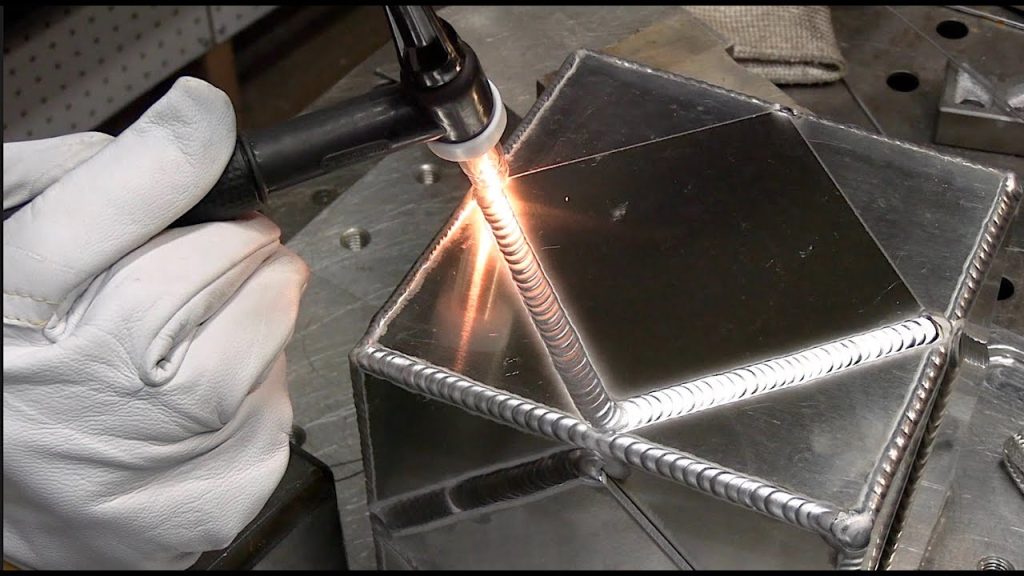The acronym TIG stands for Tungsten Inert Gas. TIG is a welding technology that uses tungsten metal for welding purposes. This welding technique is used across many sectors due to exceptional precision and versatility.
Tungsten has low melting point which makes it well suited for welding material and it is also inert to react with other metals hence it provides better joint maintaining high tensile strength and durability.
That is why professional welders as well as hobbyists use TIG or Tungsten Inert Gas welding for attaining desired welding outcomes. In the process of Tungsten Inert Gas (TIG) welding, a tungsten electrode is used to generate heat on the metal being welded, while a shielding gas, often Argon, is utilized to safeguard the weld puddle from any impurities present in the surrounding atmosphere.
Tungsten Inert Gas (TIG) welding from TIG welding machine manufacturers is capable of generating high-quality welds with exceptional precision on a wide range of metallic materials.
The significance of carefully choosing optimal Tungsten Inert Gas (TIG) welding equipment cannot be overemphasized. The assessment of weld quality not only plays a significant role in determining the total welding experience, but also exerts an influence on it.
An appropriately designed machine will augment one’s productivity, guarantee welding efficiency, and provide the necessary attributes and capacities to meet individual welding requirements.
Know about the many sorts of Tungsten Inert Gas (TIG) welding equipment now accessible on the industry.
When considering the selection of an optimal Tungsten Inert Gas (TIG) welding machine, it is essential to possess a comprehensive comprehension of the many varieties that are now accessible within the industry.
Every category has distinct characteristics and advantages, tailored to accommodate diverse welding requirements and proficiency levels.
AC/DC Tungsten Inert Gas (TIG) Welding Machines:
TIG machines can utilize alternating current as well as direct current. This dual functionality provide greater degree of versatility in welding process. We can use these tungsten operated welding machine for aluminum and magnesium materials with alternating current. While working with stainless steel, or copper we can use direct current.
- DC Tungsten Inert Gas (TIG) welding equipment only provide direct current output and are mostly used for the purpose of welding steel, stainless steel, and other ferrous metals.
- Inverter-based Tungsten Inert Gas (TIG) welding equipment are renowned for their small dimensions, lightweight construction, and energy-efficient functionality. The use of inverter technology enables the exact manipulation of welding current, leading to enhanced stability of the arc and superior quality of the weld.
- High-Frequency Start (HF) Tungsten Inert Gas (TIG) Welding Machines use a high-frequency start technique for arc initiation, providing a rapid and effortless igniting process. High-frequency (HF) machines are often used in industrial environments where the paramount importance is placed on optimizing efficiency and maximizing speed.
- Lift start Tungsten Inert Gas (TIG) welding machines use a technique whereby the arc is initiated by making contact between the electrode and the work piece, followed by a minor lifting motion to establish the arc.
Assessing the Welding Needs and Requirements
Prior to delving into the realm of Tungsten Inert Gas (TIG) welding equipment, it is essential to ascertain one’s distinct welding wants and prerequisites. This particular stage is of utmost importance in the process of identifying the ideal equipment that will effectively fulfill all desired criteria and provide outstanding outcomes.
We must consider few things in mind before we initiate the welding process using TIG welding machines. Understanding of nature of the task is crucial. Whether the purpose of welding is done for small scale projects or bigger projects. For bigger projects involvement of experienced and professional welders is required.
For proper welding results we must consider the components that will be used in the course of task. The usage of TIG welding machine provides freedom of choice to welding professionals to use direct current or alternating currents as per welding requirements. A professional welding expert knows when to use alternating current or direct current with TIG welding machine.
This choice is made as per welding material treatment since materials or metals have distinct features and properties. For example, in the case of intending to deal with aluminum, it is necessary to use a welding machine that has AC/DC capacity in order to successfully manage the alternating current necessary for welding this particular material.



